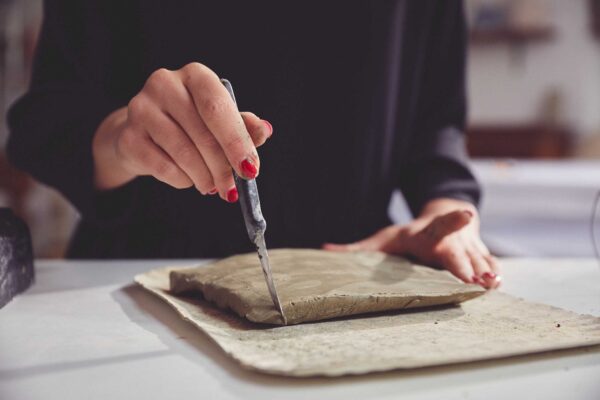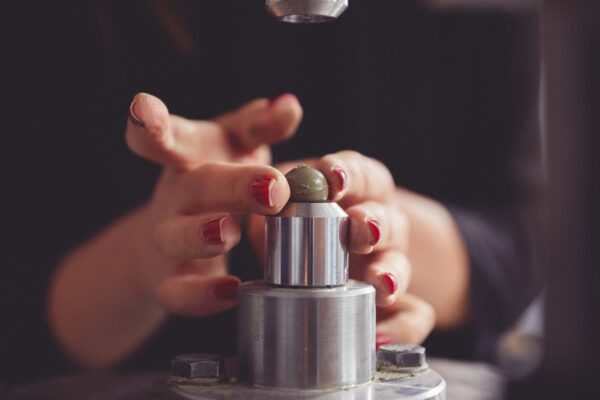| How they are currently made | |||||
| Re: The Fuseruola -- Divedog | Post Reply | Edit | Forum | Where am I? | |
06/18/2021, 07:39:52
In our laboratory, in the green heart of Italy, everything begins modeling clay, a magical material for its chemistry.
The clay, in fact, is a soil you can model if contains water, but becomes solid and rigid as soon as water evaporates.
When we hold it in our hands to create the base of our creations, the clay is moist.
It has the perfect consistency to be shaped, since we keep it in a plastic coating to preserve its humidity. Therefore, we create our spheres patiently, ensuring that they are smooth and without cracks.
Then we wait for the water to completely evaporate before passing to the next stage.
The evaporation phase is really important because avoids splits and cracks that would happen during the first burning if the clay is still wet.
The clay becomes terra cotta after the first firing, carried out in a professional oven at very high temperatures.
It is necessary to wait almost a day to open the oven and extract our cooked spheres, which are called technically “biscuits”, because of their typical reddish color.
It is during this phase that the terracotta assumes its consistency, becoming solid and waterproof. Before switching to painting, the terracotta is glazed with a lead-free varnish. The enameling purpose is to waterproof the porous spheres and facilitate their decoration.
After this, my favorite stage begins, the painting, during which I give free rein to my imagination.
Differently from the classic technique of Deruta ceramics, dusting is not applicable in our pearls, because of the small dimensions.
Each pearl is hand-painted with no guide and therefore they are all different. Painting on ceramics is a complex and extremely involving operation, especially considering that our spheres are very small and have a rounded surface. It is at this stage that the fuseruola acquires its face, and it is at this moment that the idea of the jewel arose. Following the coloring, the final touch is the application of a vitreous mix, composed by silicates and water, called crystalline.
This is a fundamental step that gives brilliance and resistance to our pearls.
Now the spheres can be fired a second time, becoming unique ceramic beads, properly named as “fuseruole”.
During the second firing the crystalline, blends with colors becoming transparent and the colors themselves change their initial appearance.
The fuseruole acquire their distinctive brilliance with an explosion of colors typical of Deruta ceramics.
It is a long and laborious process for which patience and passion are the main elements to obtain a result that we believe is surprising.
So, a centuries-old tradition made of earth, water, fire, colors and artist hands adapts to nowadays world, creating unique handmade jewels.
https://annabarola.it/en/the-fuseruola-history-and-use-in-the-production-of-hand-made-jewellery/


All rights reserved by Bead Collector Network and its users
|